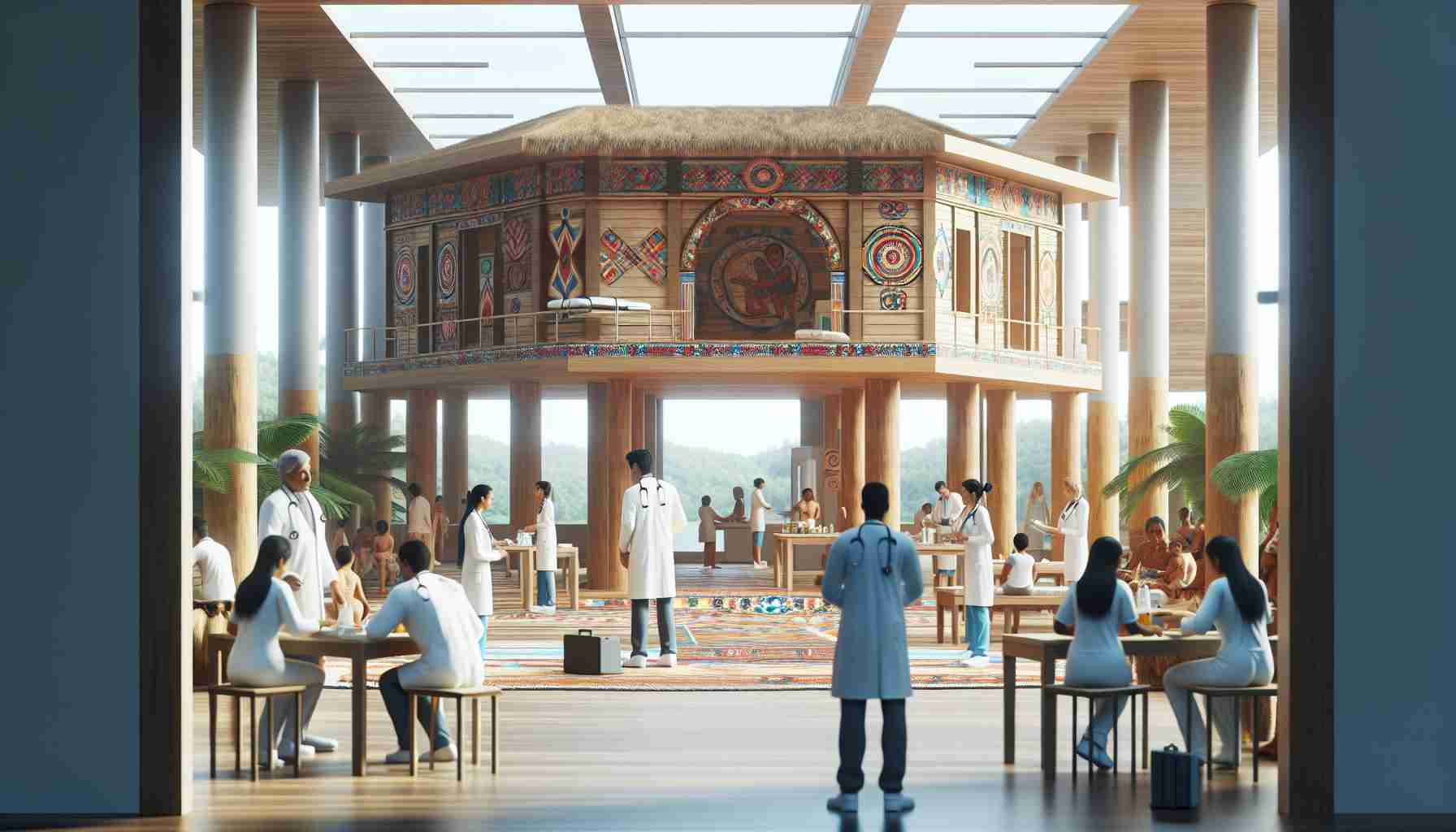A Groundbreaking Approach to Healthcare
Recently uncovered data showcases a startling reality: Indigenous populations face a significant disparity in healthcare, resulting in a 17-year gap in life expectancy compared to non-Indigenous individuals. The struggle stems from a long history of unresolved traumas and a chronic lack of resources provided by the government, leaving Native Americans in dire need of robust healthcare support.
Empowering Indigenous Communities Through Innovation
In response to this healthcare crisis, visionary leaders within Indigenous nations are taking proactive steps to revolutionize healthcare services. Rather than relying solely on governmental aid, the Cherokee Nation has embarked on an ambitious $400 million project to construct a cutting-edge hospital in Tahlequah. This state-of-the-art facility will not only cater to immediate medical needs but also focus on holistic wellness by offering a wide range of services tailored to the community’s requirements.
Comprehensive Care for a Brighter Future
In addition to physical healthcare enhancements, the Cherokee Nation is making significant strides in mental health support. Through a monumental $100 million investment, including the establishment of a specialized drug treatment center, the tribe is addressing addiction issues and promoting mental well-being. These initiatives underscore a commitment to comprehensive care, ensuring that Indigenous populations have access to resources that prioritize both their physical and mental health needs.
Collaborative Efforts for Collective Wellness
By fostering strategic partnerships with educational institutions and healthcare providers, Indigenous communities are working towards a future where quality healthcare is a fundamental right for all. These collaborative efforts, grounded in the principle of “Gadugi” – working together for the collective good – signal a unified approach to bridging the gap in healthcare outcomes and advocating for the well-being of all Native Americans. It is this collective endeavor that will spearhead a brighter and healthier future for Indigenous populations across the nation.
New Horizons in Revolutionary Healthcare Initiatives for Indigenous Communities
The efforts to address healthcare disparities in Indigenous communities continue to evolve, with innovative approaches emerging to tackle longstanding challenges. Delving deeper into this transformative landscape unveils crucial facets that shed light on the complexities and opportunities within the realm of Indigenous healthcare initiatives.
Key Questions:
1. What role does cultural competency play in the success of healthcare initiatives targeted at Indigenous populations?
2. How can traditional healing practices be integrated with modern healthcare approaches to provide more holistic care?
3. What are the main barriers hindering the effective implementation of healthcare programs in Indigenous communities?
Answers and Insights:
1. Cultural competency is essential for ensuring healthcare services resonate with Indigenous communities, promoting trust, engagement, and better health outcomes. Acknowledging and respecting cultural beliefs, practices, and values can enhance the effectiveness of interventions.
2. The integration of traditional healing practices alongside conventional healthcare can offer a more comprehensive and culturally relevant approach to wellness. By incorporating traditional knowledge and healing methods, healthcare providers can offer tailored care that resonates with Indigenous individuals.
3. Barriers to healthcare program implementation in Indigenous communities include funding limitations, infrastructure challenges, historical trauma, and a lack of culturally appropriate services. Addressing these barriers requires a multifaceted approach that considers social, economic, and political factors.
Advantages and Disadvantages:
Advantages:
– Empowerment: By taking ownership of healthcare initiatives, Indigenous communities gain autonomy and agency in shaping their health outcomes.
– Cultural Relevance: Tailoring healthcare services to align with cultural norms and values can improve accessibility and efficacy.
– Comprehensive Care: Initiatives that address both physical and mental health needs promote holistic well-being among Indigenous populations.
Disadvantages:
– Resource Constraints: Limited funding and resources may impede the scalability and sustainability of healthcare initiatives in Indigenous communities.
– Integration Challenges: Balancing traditional healing practices with modern healthcare approaches can pose implementation challenges.
– Historical Trauma: Lingering effects of historical injustices and systemic discrimination can impact trust in healthcare systems and hinder engagement.
Related Links:
National Institutes of Health
World Health Organization
